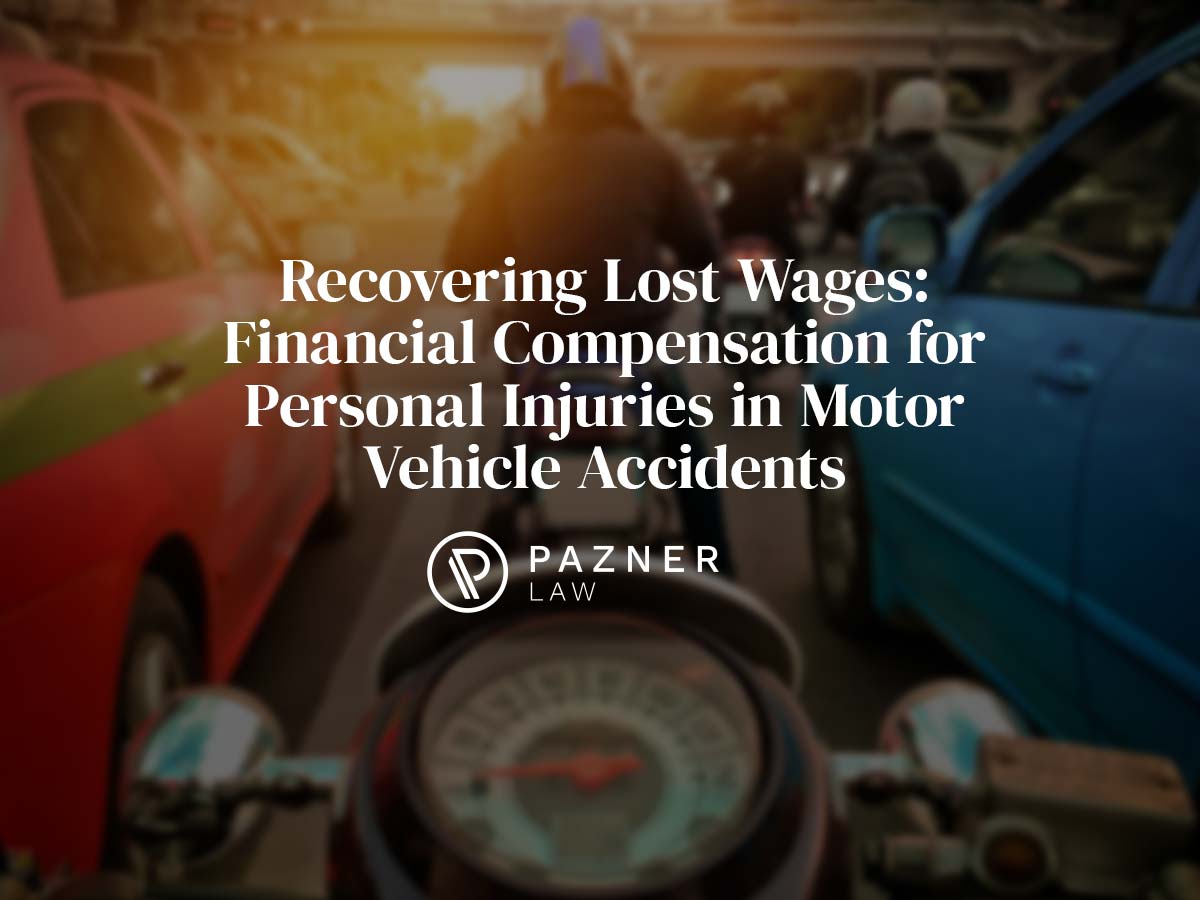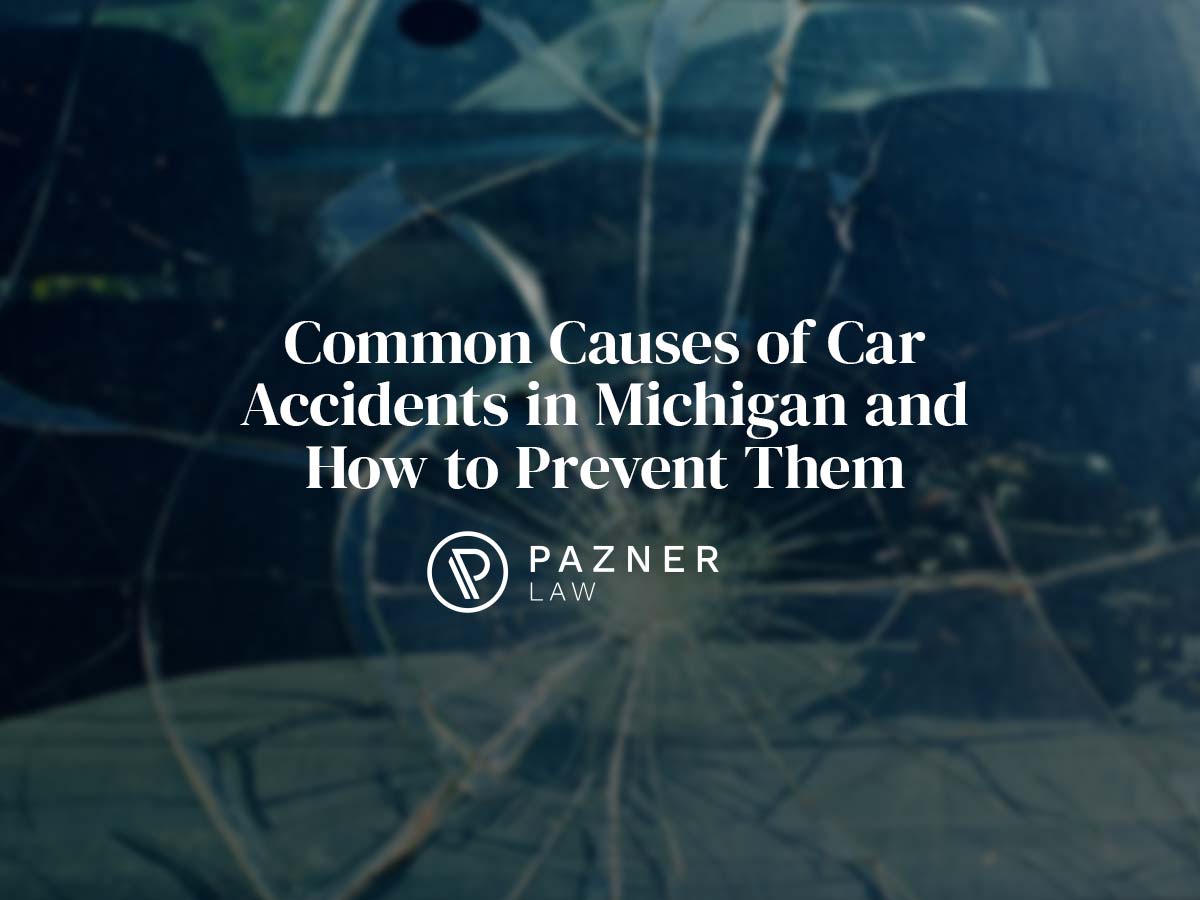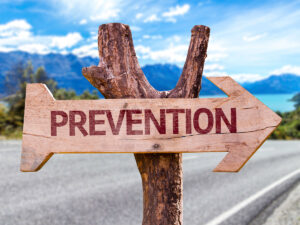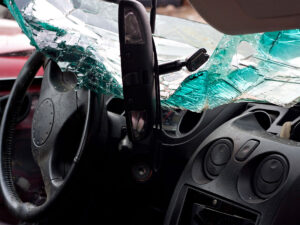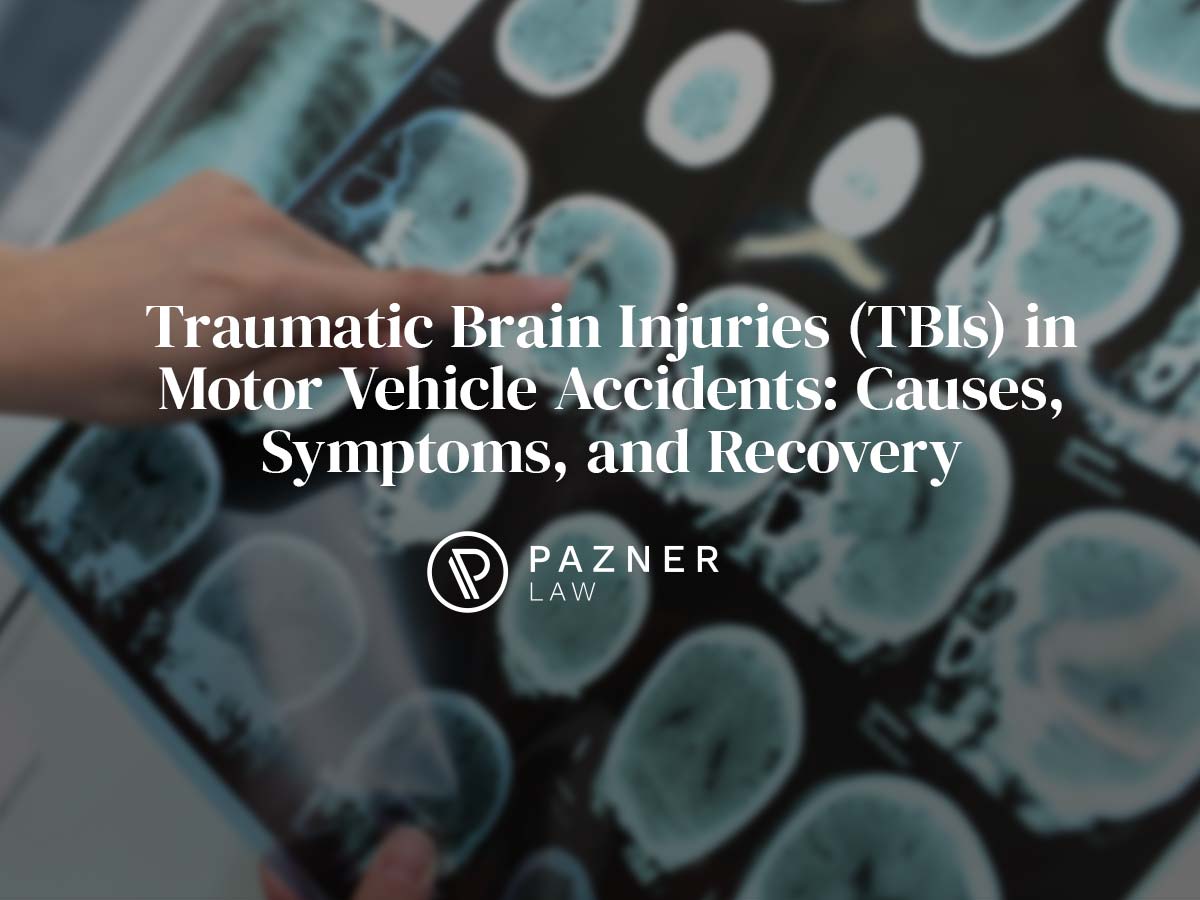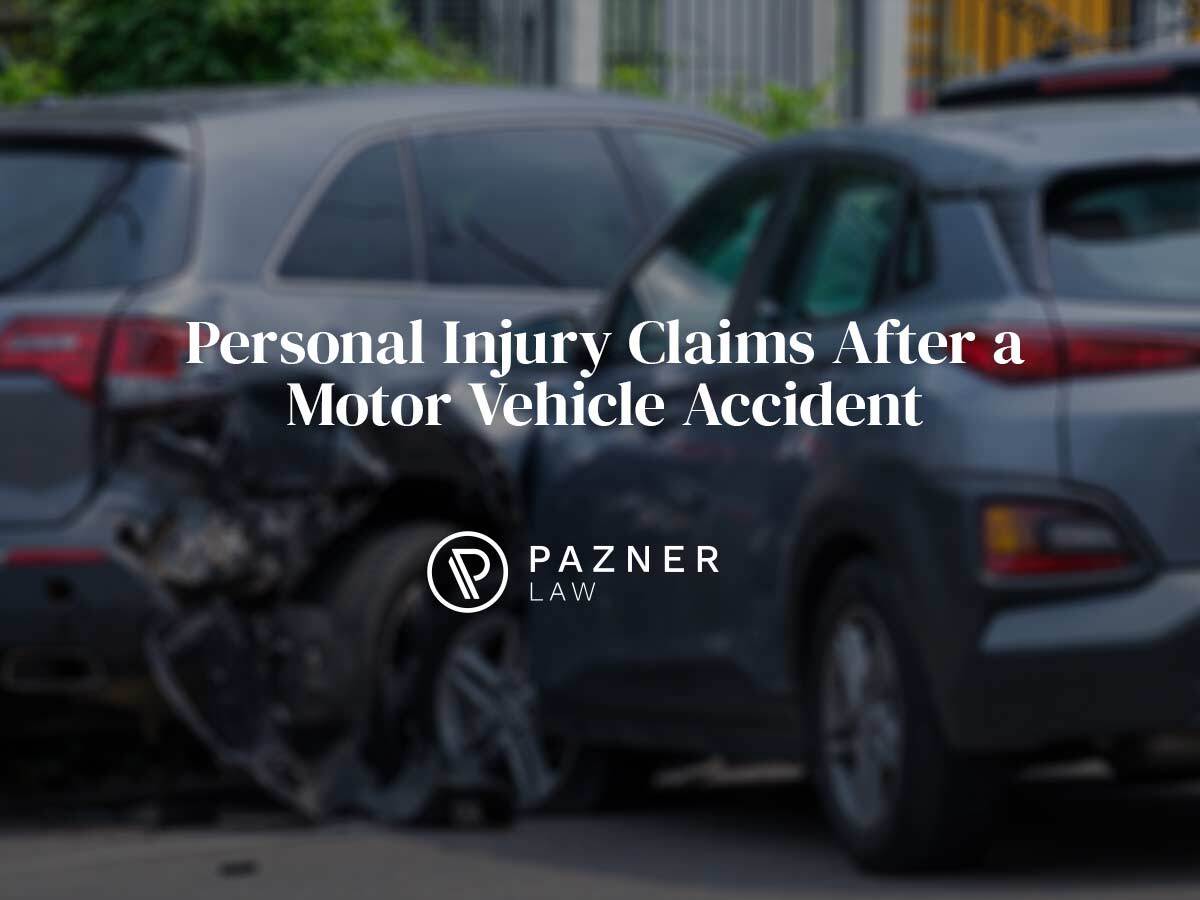Being involved in a motor vehicle accident can be a distressing experience, often resulting in physical injuries, emotional trauma, and financial burdens. Understanding personal injury claims becomes crucial for seeking
Being involved in a motor vehicle accident can be a distressing experience, often resulting in physical injuries, emotional trauma, and financial burdens. Understanding personal injury claims becomes crucial for seeking rightful compensation and justice.
This guide aims to provide you with essential insights into navigating the complexities of personal injury claims following a motor vehicle accident.
From understanding the legal process to gathering evidence and working with insurance companies, we will explore key considerations that can help you protect your rights and recover the damages you deserve.
Whether you’re a victim or a concerned party, arming yourself with knowledge is the first step towards securing a fair outcome.
Types of Motor Vehicle Accidents
Motor vehicle accidents can be classified into various types based on the vehicles involved and the circumstances surrounding the accident. Each type has its own set of unique factors that can affect the severity of the crash and the potential for injuries.
It is important to understand these different types of accidents to take appropriate safety measures and know how to handle the situation if you are ever involved in one.
This section will discuss five common types of motor vehicle accidents: car accidents, motorcycle accidents, truck accidents, bicycle accidents, and pedestrian accidents.
Car Accidents
Car accidents encompass many incidents involving cars, including single-vehicle accidents, multi-vehicle collisions, rollovers, and rear-end collisions.
Some common causes of car accidents include speeding, reckless driving, distracted driving (e.g., texting while driving), driving under the influence of alcohol or drugs, and weather conditions.
Motorcycle Accidents
Motorcycle accidents are another common type of motor vehicle accident, often resulting in more severe injuries due to the lack of protection offered by the motorcycle.
Common causes include speeding, inexperience, failing to wear appropriate safety gear, and vehicle-related defects or malfunctions.
Head-on collisions are some of the most dangerous motorcycle accidents, as the rider is directly exposed to the impact force. Other common accident scenarios include left-turn accidents (where a vehicle turns left in front of a motorcycle), lane-splitting accidents, and rear-end collisions.
Truck Accidents
Truck accidents involve large commercial trucks, such as tractor-trailers, 18-wheelers, or cargo trucks. These accidents can be particularly devastating due to the size and weight of these large vehicles.
Some common causes include driver fatigue, speeding, improper loading or maintenance, and blind spots (also known as “no-zones”).
Truck accidents might involve jackknifing, where the truck’s cab turns suddenly and skids, causing the trailer to fold at its hinge point. Another common scenario is truck rollovers, when a car veers off the road, causing the driver to lose control or overturn.
Underride and override accidents can also happen when a smaller vehicle gets trapped under or runs over the rear of a truck.
Bicycle Accidents
Bicycle accidents involve a cyclist and another vehicle or an obstacle. Common causes include vehicle doors opening suddenly, right turns on red without checking for cyclists, and motorists passing cyclists too closely.
Some common types of bicycle accidents include “dooring” (when a cyclist collides with a car door suddenly opened by a motorist), sideswiping accidents (when a motorist hits a cyclist while trying to pass), and intersection-related accidents.
Pedestrian Accidents
Pedestrian accidents occur when a vehicle strikes a person on foot. These accidents can lead to severe injuries or even fatalities, particularly when the vehicle travels at high speed.
Common causes include driver distraction, failing to yield the right of way at crosswalks, and impaired driving.
There are several types of pedestrian accidents, such as jaywalking accidents (occurring when a pedestrian crosses the street outside of a designated crosswalk), back-over accidents (when a driver doesn’t see a pedestrian while backing up), and right-turn accidents (when a driver turns without checking for pedestrians in the crosswalk).
Understanding these various types of motor vehicle accidents can help drivers, motorcyclists, cyclists, and pedestrians be more aware of potential hazards on the road to prevent accidents and stay safe.
Common Causes of Motor Vehicle Accidents
Motor vehicle accidents happen for various reasons. Some causes are driver errors and can be prevented, while external factors like weather conditions cause others.
Understanding these common causes and implementing safety measures can significantly reduce the chances of a motor vehicle accident.
This section will discuss five widespread causes of motor vehicle accidents: distracted driving, speeding, drunk driving, reckless driving, and weather conditions.
Distracted Driving
Distracted driving is one of the leading causes of motor vehicle accidents. It occurs when a driver is not fully focused on the road or their vehicle’s operation.
This includes texting or talking on a cell phone, eating, drinking, grooming, adjusting the radio or GPS device, or interacting with passengers.
One way to prevent distracted driving is to avoid multitasking while behind the wheel. This includes pulling over to make a call or text, setting up GPS and music before the journey, and abstaining from eating or drinking while driving. Hands-free devices and voice technology can also help minimize distractions.
Speeding
Speeding is another significant cause of motor vehicle accidents. When drivers exceed the posted speed limits or drive too fast for the given conditions, they put themselves and others at risk.
Speeding reduces the time a driver has to react to unexpected situations on the road and increases the severity of a crash.
To mitigate the risk of accidents due to speeding, drivers must adhere to posted speed limits and adjust their speed considering road and weather conditions.
Cruise control can help maintain a consistent speed, although it’s essential to remain vigilant and manually control speed when necessary.
Drunk Driving
Driving under the influence of alcohol or drugs impairs a driver’s ability to think clearly, react quickly, and maintain vehicle control. According to the NHTSA, nearly 29% of traffic fatalities 2019 were due to drunk driving.
Preventing drunk driving begins with individuals being responsible for their actions. If planning to drink, ensure a designated driver is available or use public transportation or rideshare services.
Friends and bystanders can also intervene to prevent intoxicated individuals from getting behind the wheel.
Reckless Driving
Reckless driving encompasses a range of behaviors that demonstrate a disregard for the safety of other road users. Such behaviors include tailgating, weaving in and out of traffic, aggressive driving, failing to yield right-of-way, and disregarding traffic signals and signs.
To prevent reckless driving and the resulting accidents, drivers should maintain a calm and defensive driving style, give others ample space on the road, and follow traffic rules and regulations diligently.
Reporting dangerous driving behaviors to local authorities can also help keep the roads safer for everyone.
Weather Conditions
Adverse weather conditions, such as rain, snow, fog, and ice, can significantly increase the risk of motor vehicle accidents.
Statistics reveal that during the winter seasons spanning from 2016 to 2020, Michigan experienced a staggering number of crashes on icy, snowy, or slushy roads. According to reports, 202,232 such accidents resulted in 370 fatalities and 2,530 suspected serious injuries.
While weather conditions may appear to be the primary factor, it is crucial to remember that each driver is responsible for enhancing driving safety by adhering to simple guidelines.
These conditions reduce visibility, impair road traction, and cause unpredictable reactions from other drivers. To minimize the risk of accidents in adverse weather conditions, drivers should adjust their speed, increase following distances, and avoid making sudden maneuvers.
Proper vehicle maintenance, including regularly checking tires, brakes, and windshield wipers, can also help maintain safety during challenging weather conditions.
If the weather is exceptionally severe, it is advisable to delay the trip until conditions improve.
What is a Personal Injury Claim?
A personal injury claim typically begins when the injured party, known as the plaintiff, files a legal complaint against the person or entity they believe is responsible for their injuries, known as the defendant.
The plaintiff will usually seek compensation for the physical, emotional, and financial harm due to the defendant’s actions or negligence.
The process typically involves a thorough investigation of the claim, which may include gathering evidence, consulting with expert witnesses, and negotiating with the defendant’s insurance company or legal representatives.
If the parties cannot settle, the case may proceed to trial, where the plaintiff must prove their case to a judge or jury.
Personal injury claims are based on the legal theory of negligence, which states that individuals and entities must act reasonably to prevent harm to others.
To establish a successful personal injury claim, the plaintiff must prove that the defendant was negligent in their actions or inactions and that their negligence was a direct cause of the plaintiff’s injuries.
Elements of a Personal Injury Claim
There are four primary elements that a plaintiff must prove to establish a successful personal injury claim. These elements include:
The plaintiff must prove that the defendant had a legal obligation to act reasonably to prevent harm to others. For example, drivers must exercise caution and obey traffic laws to avoid causing accidents.
The plaintiff must show that the defendant failed to fulfill their duty of care by acting negligently or failing to act when required. Examples of breaches might include a driver speeding or a property owner failing to maintain their premises properly.
The plaintiff must establish a clear connection between the defendant’s breach of duty and the injuries sustained. In other words, the plaintiff must show that their injuries would not have occurred if not for the defendant’s negligence.
Finally, the plaintiff must demonstrate that they have suffered actual harm or losses due to the defendant’s negligence. This may include medical expenses, lost wages, pain and suffering, and other related costs.
Statute of Limitations
A statute of limitations is a law that sets a time limit on how long an individual has to file a lawsuit after suffering an injury. The time limit varies depending on the jurisdiction and the type of claim being filed.
In most personal injury cases, the statute of limitations begins from the injury date. If a plaintiff fails to file a claim within the specified time frame, they may be barred from pursuing legal action and seeking compensation for their injuries.
It is crucial for individuals who believe they have a personal injury claim to consult with an experienced attorney as soon as possible after an injury occurs.
An attorney can help to ensure that the claim is filed within the appropriate statute of limitations and that all necessary evidence is gathered to support the case. Additionally, a personal injury lawyer can guide you in negotiating a fair settlement or taking the case to trial if necessary.
Types of Injuries and Damages
In personal injury law, injuries and damages refer to how a victim might suffer harm due to someone else’s negligence.
Damages are typically awarded to compensate the injured party for their losses and restore them to their position before the incident.
There are several types of injuries and damages in personal injury cases, including physical injuries, emotional and psychological injuries, property damage, medical expenses, lost wages and loss of earning capacity, and pain and suffering.
Physical Injuries
Physical injuries are the most common type of injury in personal injury cases. They may include everything from minor cuts and bruises to severe injuries, such as broken bones, burns, spinal cord injuries, and traumatic brain injuries.
These injuries can occur in various settings, such as car accidents, slip and fall accidents, workplace accidents, and medical malpractice cases. When assessing damages for physical injuries, the severity and long-term impact of the injury are usually considered.
This may include compensation for past and future medical treatment, rehabilitation, and any necessary adaptive devices or modifications to the victim’s home.
Emotional and Psychological Injuries
Emotional and psychological injuries can be as debilitating as physical ones, especially in traumatic events or long-term abuse cases. These damages may include anxiety, depression, post-traumatic stress disorder (PTSD), and other mental health issues arising from the incident.
Emotional and psychological injuries can be harder to prove than physical injuries, as they often do not have visible symptoms. However, experts in mental health fields and the victim’s testimony can help establish the presence and severity of these injuries.
Damages for emotional and psychological injuries may also include compensation for therapy, counseling, and any necessary medication.
Property Damage
Personal injury cases may also involve damages to the victim’s private property. This may include an automobile in a car accident, a bicycle in a bike accident, or personal belongings damaged or destroyed during an accident or incident.
Compensation for property damage is typically based on the fair market value of the damaged or destroyed items.
Appraisals, purchase receipts, or other methods of valuation can determine this. In some cases, victims may also be compensated for the loss of use of the damaged property, such as rental car expenses for a damaged vehicle.
Medical Expenses
Victims of personal injury cases often face significant medical expenses due to their injuries. This can include hospital bills, doctor appointments, surgery costs, medication, and rehabilitation or physical therapy expenses.
Compensation for medical expenses is intended to cover both past and future medical costs resulting from the injury. This may require expert testimony from doctors and other medical professionals who can provide estimates of future treatment costs.
Lost Wages and Loss of Earning Capacity
When a victim is injured, they may be unable to work for some time or may suffer permanent disability that affects their ability to earn a living. As a result, personal injury cases often involve damages for lost wages and loss of earning capacity.
Lost wages refer to the income the victim would have earned had they not been injured. Loss of earning capacity refers to the victim’s future earning potential that has been affected by the injury.
Both types of damages may require expert testimony, such as economists or vocational experts, to estimate the amount of lost and potential future earnings.
Pain and Suffering
Pain and suffering damages are meant to compensate the victim for the physical and emotional pain they have experienced due to their injuries.
This may include the pain resulting from the actual injuries and the ongoing discomfort and any permanent limitations or disabilities that may arise from the injury.
Pain and suffering damages are subjective and can vary greatly depending on the individual case.
Factors that may impact the amount of pain and suffering damages awarded can include the severity of the injury, the length of time it takes for the victim to heal, and the impact the injury has had on the victim’s overall quality of life.
Determining Fault and Liability
Determining fault and liability in motor vehicle accidents is crucial for both insurance purposes and legal proceedings.
This section will discuss various concepts and principles used to establish fault and liability in a motor vehicle accident, including negligence, contributory, comparative, strict, and vicarious liability.
Negligence
Negligence is the failure to exercise reasonable care in order to prevent harm to oneself or others.
In the context of motor vehicle accidents, negligence typically arises when a driver violates traffic laws or fails to exercise the required level of care and attention while operating a vehicle.
Examples of negligence include speeding, failing to yield the right of way, or driving under the influence of alcohol.
In order to establish negligence, the injured party must prove four elements: (1) the existence of a duty owed by the defendant to the injured party; (2) the breach of that duty; (3) causation, meaning the breach directly caused the harm; and (4) damages, meaning the injured party suffered measurable harm as a result of the breach.
Contributory Negligence
Contributory negligence is a defense raised by the defendant in a motor vehicle accident case, alleging that the injured party’s own negligence contributed to their injuries. If a party claiming damages is found to have contributed to their own injury, they may be barred from recovering any compensation in some jurisdictions.
This approach is considered harsh because it may result in no recovery for the injured party, even if their negligence was only a minor factor in the accident.
Comparative Fault
Comparative fault is a legal principle that aims to allocate responsibility for an accident based on the degree of fault of each party involved.
Under a comparative fault system, the damages award for an injured party is reduced by the percentage of fault in the accident. There are two main types of comparative fault systems: pure comparative fault and modified comparative fault.
In a pure comparative fault system, a party can recover damages even if they are 99% at fault for the accident, with their recovery reduced by their percentage of fault.
In a modified comparative fault system, a party can only recover damages if their percentage of fault is below a certain threshold (usually 50% or 51%).
Strict Liability
Strict liability is a legal principle that holds a party responsible for damages regardless of negligence or intent.
While it is rare in motor vehicle accidents, strict liability may come into play when dealing with certain activities or products that are inherently dangerous, such as if a vehicle malfunctioned due to a manufacturing defect.
In a strict liability case, the injured party needs to prove only that the defect exists and caused their injuries, without having to establish negligence on the part of the manufacturer.
Vicarious Liability
Vicarious liability is the concept of holding one party responsible for the negligent actions of another, based on their relationship. In the context of motor vehicle accidents, employers can be held vicariously liable for the actions of their employees if the accident occurred during the course of employment.
If an employee causes an accident while driving a company car on company business, the employer may be liable for damages even if they were not directly involved in the accident.
Steps to Take After a Motor Vehicle Accident
In order to successfully navigate the claims process and protect your legal rights after a motor vehicle accident, it is imperative that certain steps are taken immediately following the incident.
Ensure Safety and Call for Help
The first step after a motor vehicle accident is to ensure the safety of all involved parties. If possible, move vehicles out of traffic to avoid further collisions.
Check for any injuries and call 911 if anyone needs emergency medical attention. Even if there are no serious injuries, it is still important to notify the authorities and request a police response to the scene.
Collect Information and Document the Scene
Gathering information at the scene of the accident is crucial for any future insurance claims or legal proceedings.
Exchange contact, driver’s license, and insurance information with the other driver(s) involved in the accident. Obtain the contact information of any witnesses who may have seen the accident occur.
Take photographs of the accident scene, including the positions of the vehicles, any property damage, and any visible injuries sustained in the accident. These photographs will serve as evidence and can be helpful in determining fault and liability for the accident.
Seek Medical Treatment
It is essential to seek immediate medical treatment following a motor vehicle accident, even if you do not feel pain immediately.
Some injuries, such as whiplash or internal bleeding, may not be immediately apparent but can have serious long-term consequences if left untreated.
Promptly addressing any medical concerns will aid your recovery and provide evidence of your injuries in any insurance claim or legal proceeding.
Report the Accident
In many jurisdictions, it is required by law to report a motor vehicle accident to the appropriate authorities. This typically involves contacting your local police department, as well as your insurance company.
When providing a statement to the police or insurance company, it is important to be factual and honest about the events surrounding the accident. Your statement may become a part of the official accident report, which can be a crucial piece of evidence in determining fault and liability later on.
Filing a Personal Injury Claim
A personal injury claim is a legal process you initiate when you suffer injuries due to the negligence or wrongful acts of another person, entity, or organization.
Filing a personal injury claim allows you to seek financial compensation for your medical expenses, lost income, and other damages resulting from the accident.
This section will guide you through the essential steps of filing a personal injury claim, including consulting with an attorney, investigating the accident, negotiating with insurance companies, and preparing for a trial if necessary.
Consultation with an Attorney
The first step in filing a personal injury claim is to consult with an experienced attorney. Attorneys who specialize in personal injury cases understand the complexities of the legal process and can help guide you through the steps of your claim.
During your consultation, be prepared to provide your attorney with as much information about the accident as possible, including the circumstances of the incident, any witnesses, and any evidence you may have, such as photographs or medical records.
The attorney will evaluate your case and advise you on your legal rights and the best course of action to take. This might include filing a lawsuit, settling out of court, or pursuing alternative dispute resolution methods.
Investigation of the Accident
Once you have retained a personal injury attorney, they will initiate a thorough investigation of your accident. This may involve gathering additional evidence, interviewing witnesses, and evaluating the extent of your damages.
Your attorney may also consult with experts to better understand the extent and causes of your injuries. For example, a medical expert can help determine your prognosis and the extent of your future medical needs.
An accident reconstructionist can provide insight into the mechanics of the accident and help establish liability.
Negotiating with Insurance Companies
The at-fault party’s insurance company will become involved in many personal injury cases. Your attorney will handle communications and negotiations with the insurance company on your behalf.
Insurance companies are notorious for attempting to minimize the compensation they pay accident victims.
An experienced personal injury attorney will ensure that the insurance company treats your claim fairly and obtains the maximum compensation for your injuries.
During the negotiation process, your attorney will present the insurance company with a demand letter outlining the extent of your damages, any supporting documentation, and the compensation amount you seek to resolve the claim.
Filing a Lawsuit
If negotiations with the insurance company cannot reach a fair settlement, your attorney may advise you to file a lawsuit and take your case to court.
The process of filing a lawsuit typically involves drafting and filing a complaint, which is a document that outlines the nature of your claim, the legal basis for your claim, and the damages you are seeking.
Once the lawsuit is filed, the defendant (the person or entity you are suing) has a specific amount of time to respond to the complaint, typically 20-30 days.
The defendant’s response may include a counterclaim, which is a separate claim against the plaintiff (you), or a motion to dismiss the lawsuit.
Pre-Trial Discovery and Negotiations
After the lawsuit is filed and the defendant has responded, both parties engage in the discovery process, during which they exchange information and evidence related to the case.
This may involve issuing subpoenas for documents, conducting depositions of witnesses and parties, and exchanging written questions or requests for admissions.
Throughout this process, your attorney may continue to negotiate with the defendant or their insurance company to reach a fair settlement. If a settlement is reached during the discovery process, the case will not proceed to trial, and your claim will be resolved.
Trial and Verdict
If your case proceeds to trial, both sides will present their evidence and arguments to a judge or jury who will determine the outcome of your case. The trial process may involve opening and closing statements, examination and cross-examination of witnesses, and the introduction of evidence.
It is essential to have a skilled personal injury attorney representing you during the trial to ensure that your interests are protected and that you receive the best possible outcome.
Once the trial concludes, the judge or jury will render a verdict. If they find in your favor, you will receive compensation for your damages as determined by the court.
If the verdict is not in your favor, you may choose to appeal the decision or accept the outcome and move on. Your attorney will guide you through your options and work diligently to achieve the best result for your case.
Understanding the Settlement Process
A settlement process is a legal means of resolving disputes between two parties, typically involving the payment of money or other forms of compensation.
It’s an alternative to going to trial, which can be costly and time-consuming. Understanding the settlement process is essential when dealing with personal injury claims, workers’ compensation cases, or any other dispute involving compensation.
Evaluating the Value of Your Claim
Before negotiating a settlement, it’s crucial to accurately determine your claim’s value. This means considering various factors that contribute to the amount you should be compensated for.
A few key considerations include:
Assess the total amount of damages you’ve incurred, including medical bills, lost wages, pain and suffering, property damage, and any other losses directly related to the dispute. Keep in mind that you’ll need documentation to support these claims, such as medical records, receipts, and employment records.
Consider the extent to which the other party is responsible for your damages. You’re more likely to receive a higher settlement if they’re entirely at fault. However, your compensation may be reduced accordingly if you share some responsibility.
Research similar cases and their outcomes to determine what kind of compensation might be reasonable in your situation. Keep in mind that each case is unique, and there isn’t a one-size-fits-all approach to determining the value of a claim.
Factors Affecting the Settlement Amount
Several factors can influence the final settlement amount, including:
- The strength of your evidence
The more evidence you have to support your claim, the stronger your position when negotiating. Ensure you have gathered all relevant documentation and consult with an attorney to ensure the evidence is presented in the best possible light.
The defendant’s insurance policy may have coverage limits that can affect the amount available for your settlement. Be sure to investigate these limits and consider your options if your claim exceeds these limits.
- The defendant’s financial situation
If the defendant has limited financial resources, it may be more challenging to secure a substantial settlement amount. In these cases, you might have to accept a lower settlement or consider pursuing a judgment in court that could force them to pay over time.
- Your willingness to go to trial
Your willingness to go to trial can significantly impact settlement negotiations. Show that you’re prepared to take your case to court. The opposing party might be more inclined to offer a reasonable settlement to avoid the potential expenses and risks associated with a trial.
Negotiating a Settlement
During the negotiation process, both parties will typically present their case and consider each other’s demands. It’s crucial to maintain open communication lines and be willing to compromise to reach a fair settlement.
Additionally, it’s essential to consult with an experienced attorney to help guide you through the process and ensure you’re making informed decisions.
Structured Settlements vs. Lump-Sum Payments
Once a settlement amount has been agreed upon, the payment can either be made as a lump-sum or as a structured settlement. A lump-sum payment is a one-time payment of the full settlement amount, while a structured settlement involves periodic payments over an agreed-upon period.
Each option has its pros and cons. A lump-sum payment allows you to receive your entire settlement at once, enabling you to cover immediate expenses and invest the remainder according to your needs.
On the other hand, a structured settlement provides a reliable stream of income over time and may offer tax advantages.
Consider your financial goals, ongoing expenses, and personal preferences when deciding between these two payment options.
Finalizing the Settlement
Once a settlement agreement has been reached, each party will sign a legally binding contract outlining the terms of the settlement.
Ensure that you carefully review all aspects of the agreement before signing, as it will likely limit your ability to pursue additional compensation in the future.
After the agreement is finalized, the settlement funds will typically be distributed according to the agreed-upon terms.
It’s essential to remember that the settlement process can take time, and you may need to exercise patience while waiting for your compensation. Additionally, be prepared to consult with financial and legal professionals to ensure the best decision-making and investment planning moving forward.
Tips for Maximizing Your Personal Injury Claim
Personal injuries can be physically, emotionally, and financially draining. It’s important to obtain fair compensation for your injuries in order to support your recovery.
This section will provide tips on maximizing your personal injury claim, including documenting your case, seeking consistent medical treatment, avoiding oversharing on social media and working with an experienced attorney.
Proper Documentation
One of the most important aspects of maximizing your personal injury claim is keeping meticulous records and evidence.
This includes properly documenting your injuries, medical treatments, and expenses related to the accident.
Take photos of the scene of the accident, as well as any injuries sustained. If there are witnesses to the incident, it’s important to get their contact information and statements as they can be valuable during the negotiation process.
Make sure to keep all medical records and receipts for treatments and medications related to your injuries. Track and document your lost wages due to missed work because of the injury.
Make a daily journal of your pain, suffering and limitations resulting from the accident. This information can be helpful when it comes time to negotiate a settlement with the insurance company or if your case proceeds to trial.
Consistent Medical Treatment
Seeking and following a consistent medical treatment plan will not only help your recovery, but also improve the value of your claim. Insurance companies often argue that if the injured person was not consistently seeking medical treatment for their injuries, they must not be seriously injured.
By seeking regular medical care and following your doctor’s recommendations, you can avoid these arguments and ensure that your medical records accurately reflect the impact of your injuries.
Don’t wait too long to get treatment after an accident. Delaying treatment gives the insurance company the opportunity to argue that your injuries are not related to the accident, or that they were not severe enough to warrant compensation.
Attend all scheduled appointments and indicate any limitations on your daily life to your healthcare providers. This documentation will help to build a solid foundation in your claim.
Avoid Oversharing on Social Media
Insurance companies often use social media profiles to dispute injury claims. They may try to use information from your social media posts to argue that your injuries aren’t severe, or that you’re not experiencing the pain and suffering you’re claiming.
To avoid accidentally harming your claim, limit your social media activity and restrict the audience for your posts as much as possible.
Ensure your privacy settings are updated and don’t post pictures or updates about your injury or recovery. Ask your friends and family to avoid posting about your accident or tagging you in photos that could depict you as healthy and active.
By controlling your social media presence, you can prevent the opposing side from using it against you during settlement negotiations or at trial.
Working with an Experienced Attorney
Hiring an experienced personal injury attorney is critical to maximizing your claim. A skilled attorney will navigate the complexities of the legal system, and ensure your interests are protected throughout the process.
They will help you gather and organize evidence, file the necessary paperwork, and negotiate with the insurance company on your behalf.
Furthermore, personal injury attorneys typically work on a contingency fee basis, meaning they only get paid if they secure a settlement or win at trial. This incentivizes them to work hard to maximize your claim’s compensation amount.
In summary, to maximize your personal injury claim, it is vital to document your case thoroughly, seek consistent medical treatment, be cautious with social media activity, and hire an experienced attorney.
These steps will help you build a strong foundation for your case and increase your chances of receiving fair compensation for your injuries.
Conclusion
In conclusion, understanding personal injury claims after a motor vehicle accident is vital for individuals seeking justice and fair compensation.
By familiarizing yourself with the legal process, gathering evidence, and working with experienced professionals, you can navigate the complexities of personal injury claims more effectively.
Remember to prioritize your well-being, document your injuries and losses, and seek the guidance of reputable legal experts.
While the aftermath of a motor vehicle accident can be overwhelming, arming yourself with knowledge and taking proactive steps will help you protect your rights and pursue the compensation you deserve. Stay informed, stay resilient, and take the necessary actions to move forward on the path to recovery.
When it comes to advocating for victims and medical care providers in auto accidents, Pazner Law stands out as a trusted resource.
With our expertise and specialization in Michigan auto No-Fault Law, Pazner Law is recognized as a leading authority in the field. Our dedicated team is committed to providing personalized guidance and fighting for the rights of their clients.
Remember, after a motor vehicle accident, it is crucial to seek the assistance of experienced professionals who can provide the knowledge and support necessary to navigate the legal landscape.
By working with us, you can have confidence in their commitment to protecting your interests and pursuing the compensation you deserve. Contact us today for more details!
Vestibulum fringilla urna leo, nec aliquet justo mollis at. Pellentesque nec dolor. Cras a risus mauris. Vestibulum fringilla urna leo, nec aliquet justo mollis at. Pellentesque nec dolor. Cras a risus mauris.
